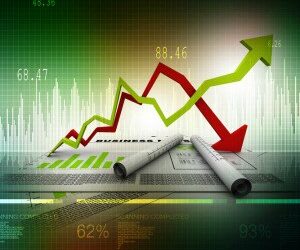AT A GLANCE
. SRI benchmarks have strong weighting to growth (over value).
. Performance is predominantly a product of style and capitalisation shifts.
. Advisers need to play an important part in managing client expectations so they understand the risks associated with doing good.
A recent study by the University of Queensland Business School (2006) concluded that investors were not significantly disadvantaged by choosing socially responsible investments (SRI). However, as always the picture becomes clearer when you dig behind the numbers.
The study examined returns of the Dow Jones Sustainability World Index from 1998 to 2002. The Dow Jones World Sustainability Index is a subset of the Dow Jones World Index. Stocks are assessed according to more than 30 specific criteria for their economic, environmental and social performance. The Dow Jones Sustainability Index includes 300 companies from 24 countries that lead their industries in terms of corporate sustainability.
The performance of the Dow Jones Sustainability World Index against the Dow Jones World Index is provided below to June 30, 2006, as well as for the period studied by the University of Queensland Business School (1998-2002). The table shows that while the SRI benchmark has underperformed for one, three and five years the benchmark has significantly outperformed (on a per annum basis) over 10 years.
Is the long-term outperformance of the SRI benchmark a result of good quality SRI companies or rather the outworking of fundamental sector and capitalisation tilts?
Advocates of SRI argue that socially responsible firms will outperform non-socially responsible firms over the long term.
SRI benchmarks and funds, to varying degrees, incorporate positive screening. Positive screening gives greater weight to companies that exhibit certain criteria, such as employee relations, a diverse board of directors, charitable giving, energy conservation, product safety and a strong environmental record.
Academic research on the extent to which positive social responsibility scores increase share price returns appear mixed.
There are suggestions firms that adopt social responsibility are placing themselves at an economic disadvantage, as such commitments have high explicit costs.
Other studies have stressed that while the explicit costs of social responsibility are high they are offset by a reduction in implicit costs. Firms that adopt social responsibility and value stakeholders, such as staff, community and the environment, will have lower implicit costs from these groups as stakeholders will be more confident that the firm will honour their claims.
Analysis of 2,800 firms, with social responsibility rankings, proves no evidence of a link between stock performance and the company’s level of social responsibility.
SRI benchmarks have greater weight to growth over value companies. This is because the sectors excluded such as military equipment, nuclear power, alcohol, tobacco and gaming, have strong value fundamentals.
While style differentiation can be beneficial, it can result in significant variance from the traditional (non-SRI) benchmarks over short periods, assuming mean reversion and efficient market theory imply equal returns for both value and growth over the long term.
The graph below shows the excess return of the Dow Jones Sustainability Index over the Dow Jones World Index.
The significant outperformance from 1995 to 1998 occurred in a period when growth themes dominated the market. Since 2001, global equity markets have been driven by value themes and the Dow Jones World Sustainability Index has underperformed.
SRI benchmark performance is also a product of capitalisation biases. The Dow Jones World Sustainability Index has a large cap bias, while the Domini Social Index (US-based SRI index) has a small cap bias.
Thus performance is predominantly the product of style and capitalisation shifts.
The challenge for investors is how to weight SRI with other investments. Given the style and capitalisation tilts in the benchmarks used by SRI managers, investors seeking to replicate the risk/return of the traditional benchmark will need to blend their SRI portfolios with other value/capitalisation tilted portfolios (socially responsible or otherwise).
While total capital committed to SRI is large, demand has predominantly been from governments and institutions. The number of Australian (10) and global (7) SRI funds is small.
While SRI offers investors the opportunity to ‘do well while doing good’ it also presents significant benchmark risks for clients. Advisers need to play an important part in managing client expectations so they understand the risks associated with doing good.







